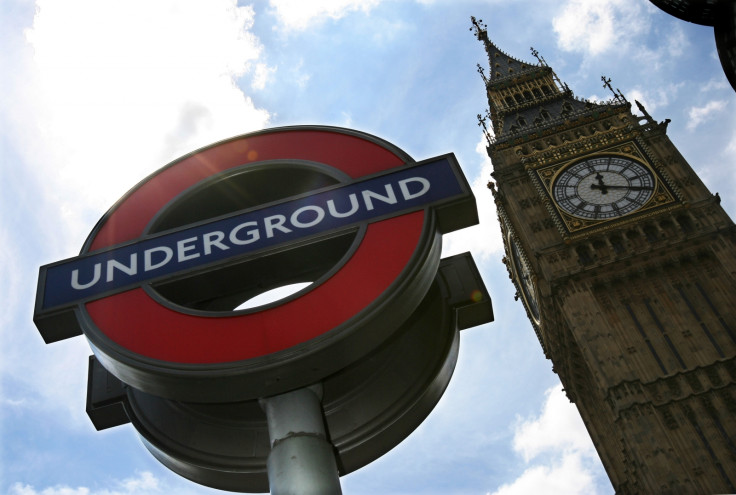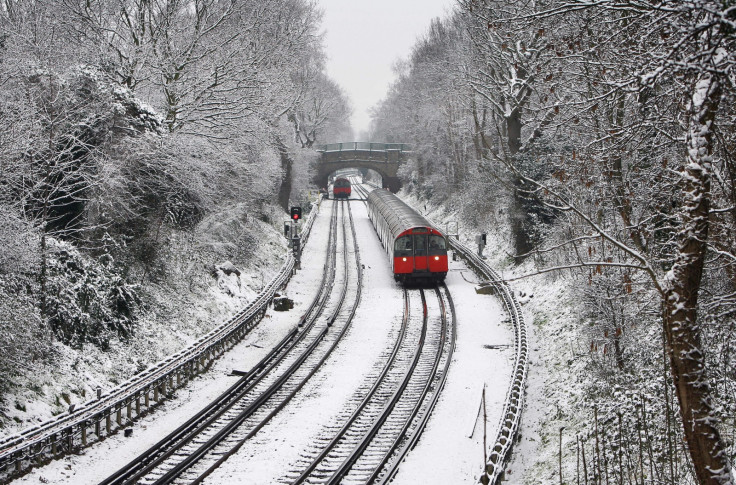Night Tube: 24 amazing facts about London's historic underground railway
The 24-hour London Underground service will begin on Friday 19 August.
Londoners will be able to travel throughout the night from this weekend with the launch of the 24-hour Tube service. For the first time in the London Underground's 150-year history, trains will run at night on Fridays and Saturdays, enabling revellers in the capital to get home without paying extra for taxis or waiting for night buses.
The new service, which will boost London's economy and jobs, is to launch on Friday 19 August. Announcing the start date back in May, Mayor of London Sadiq Khan said: "The Night Tube is absolutely vital to my plans to support and grow London's night-time economy – creating more jobs and opportunities for all Londoners."
Ahead of the new nocturnal service, here are 24 interesting facts about the London Underground –the oldest metro system in the world.

- The London Underground opened on 10 January 1863 with the launch of the Metropolitan Railway – the world's first underground railway. It shuttled passengers between Paddington - which was called Bishop's Road at the time – and Farringdon Street.
- Only 45% of the London Underground network is actually in tunnels.
- During the Second World War, many underground stations were used as air-raid shelters, but the Tube was also home to a secret aircraft components factory. The factory, completed in 1942, was hidden deep underground in north London in what were unfinished tunnels for the Central line extension.
- The London Underground handles up to 4.8 million passenger journeys per day.
- Harry Beck, the man behind the famous Tube map, received just 10 guineas for his creation.
- The 1975 tube crash at Moorgate station was the greatest loss of life during peacetime on the London Underground. A train failed to stop at the station, which was at the end of the Northern City line at the time, killing 43 people and injuring a further 74.

1940: People sleep on the platform of Holborn station during an air raid Hulton Archive/Getty Images - Waterloo is the busiest station on the network with around 95.1 million passengers every year.
- The longest direct journey on the Tube is from Epping to West Ruislip on the Central line, which is a journey of 54.9km.
- The shortest distance between stations is just 0.3km between Leicester Square and Covent Garden on the Piccadilly line. Despite the journey only taking around 20 seconds, the route still remains extremely popular with tourists.
- London's first escalators were installed at Earl's Court station in 1911.
- Tube carriages originally had no windows and were nicknamed 'padded cells'.
-

18th February 1912: Workers on the Central Line extension to Bank Hulton Archive/Getty Images The first baby to be born on the London Underground was at Elephant & Castle station in 1924. Although the press originally reported she had been named Thelma Ursula Beatrice Eleanor, which would spell TUBE with her initials, this was false. She was actually called Marie Cordery.
- The station furthest from central London is Chesham on the Metropolitan line, which is around 47km from Aldgate.
- Smoking on all underground trains wasn't fully banned in 1984, which brought an end to the designated smoking carriages.
- The Bethnal Green Tube disaster is the worst civilian disaster of the Second World War in Great Britain. A total of 173 people, including 62 children, died in a crush on 3 March 1943 when people rushed to enter the station after hearing air-raid sirens. The alarms turned out to be a test.

The majority of the London Underground is overground Adrian Dennis/AFP/Getty Images - The average speed of a train on the London Underground is 33kph.
- Aldgate station is built on the surface of a large plague pit, in which more than 1,000 unidentified bodies are buried.
- There is a ghost station between Tottenham Court Road and Holborn called British Museum, but it has not been used since 1932.
- In 2001, Transport for London introduced a perfume called 'Madeleine' to three stations on the Underground in a month-long trial to cover-up the usual Tube odours. The project was abandoned after passengers complained of feeling sick.
- The District line has the most stations, with a total of 60.
- In 1978, Hannah Dadds became the first woman employed as a London Underground train driver.
- Bank is the deepest station below street level in central London, at 41.4m deep.
- The London Underground logo, first used at the station now known as St James's Park in 1908, is called the Roundel.
- The longest distance between stations is 6.3km, between Chesham and Chalfont & Latimer on the Metropolitan line.
© Copyright IBTimes 2025. All rights reserved.



















